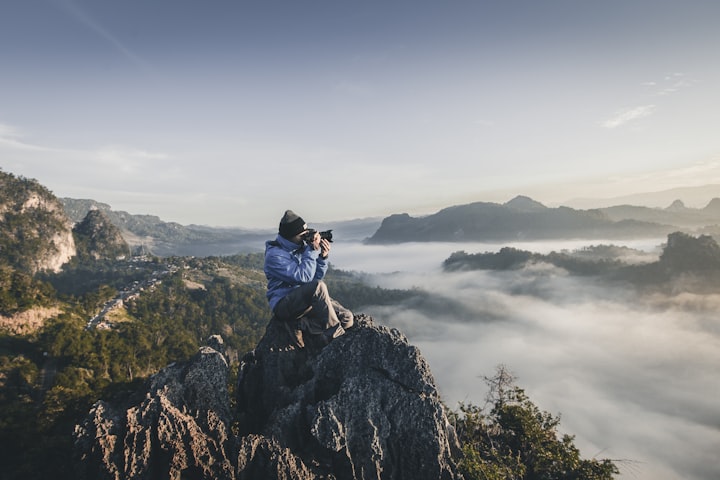

1. To balance your shot, use gridlines.
Turning on the gridlines in the camera is one of the simplest and finest ways to enhance your smartphone images. In doing so, a set of lines based on the "rule of thirds," a photographic composition theory that states a picture should be divided into thirds both horizontally and vertically, giving you a total of nine parts, are superimposed on the screen of your smartphone's camera.
This idea states that if you position objects of interest in these intersections or along the lines, your image will be more level and balanced and viewers will be able to engage with it more organically.

2. Set the focus on your camera.
The foreground of your frame is automatically focused by today's phone cameras, but not every photo you snap on your phone has a clear subject. Open your camera app and tap the screen where you wish to sharpen the view to adjust where your camera lens will concentrate.
It may be challenging for your camera to track a moving subject and adjust focus as necessary if you're snapping pictures of it. Before taking the image, tap the screen to adjust the focus so that the moving object is as sharply in focus as possible. The camera's display should then show a square or circular icon, which will cause the entire subject of the photo to become that icon's focus.

3. Make use of HDR mode.
A camera app function known as high dynamic range, or HDR, aids in balancing the light and dark portions of a photograph with strong contrast. It can be used to add a more artistic or creative feel to photographs, but it is typically employed to create an image that resembles what you see with your eyes.
It can be challenging to acquire the ideal exposure for both light and dark regions with smartphone cameras. You might be photographing someone outside in a shady area with a bright background or inside in a dimly lit room with a bright wall. The subject of the photo could be underexposed if the exposure is set to the background. On the other hand, adjusting the exposure to the subject can cause the background to be overexposed.

4. Make use of natural lighting.
It's challenging to locate a fantastic smartphone flash snapshot. The majority of the time, they cause an image to appear overexposed, ruining colours and making people in the picture look washed out.
Utilize all sources of natural light you may locate, even after it has been dark. This provides you the opportunity to experiment with shadows, like in the second picture below, or make a silhouette using other ambient sources of light, including nearby buildings and traffic.

5. Concentrate on a single subject.
Many of the best images have a single, intriguing subject. Spend some extra time setting up the shot while photographing one. According to some experienced photographers, the subject should not fill the full frame and that two-thirds of the photo should be negative space – this makes the topic stand out even more.
However, be sure to tap the screen of your smartphone to focus the camera on your subject — this will assist to guarantee that the camera is focused and the lighting is adjusted.

6. Keep your phone still.
While smartphones have enabled us to take images on the fly, the cameras on our phones remain sensitive to movement. To avoid blurry or twisted photos, first steady your camera.
To keep your arms or hands from wobbling, lean on a friend or a wall, or support your phone up with books or similar objects.

7. Consider purchasing a portable tripod.
Although mobile devices make it simple to capture photos on the move, there has never been an easy way to ensure the photograph remains level and balanced when you shoot — especially if you want to be in the picture and not just take a standard selfie with your outstretched arm.
Mobile tripods allow you to mount your smartphone for quick hands-free photographs without carrying any hefty equipment. Most mobile tripods are hardly bigger than your smartphone and can bend to any angle. Learn how these micro tripods can help you improve your mobile video experience in the video below.

8. Play with reflections.
The sight of the sky reflected in a body of water is so romantic. We like seeing that for a reason: our eyes are drawn to reflections. So search for opportunities to experiment with them in photographs.
Puddles, larger bodies of water, mirrors, sunglasses, drinking glasses, and metallic surfaces are just a few examples of unusual places to detect reflections.
Improve Your Photography
We can now capture high-quality images and edit them without too many bells and whistles thanks to our mobile devices and the editing software that come with them — all from the same device that we use to make calls.
About the Creator
WHB
Writing is just my side hustle,editing is my passion,painting is my hobby.






Comments
There are no comments for this story
Be the first to respond and start the conversation.